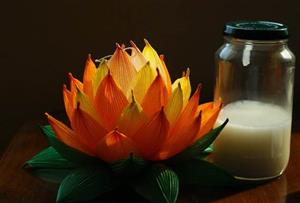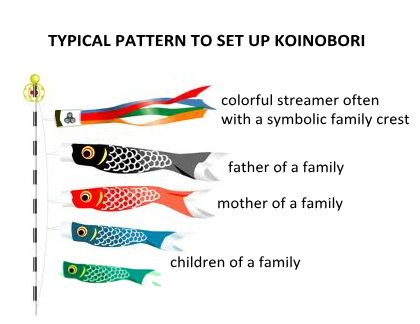-
What happens in our corner of the world in May?
Buddha's birthday:
is a Buddhist festival and holiday celebrated in most of East Asia commemorating the birth of the Prince Siddhartha Gautama, later the Gautama Buddha and founder of Buddhism. In South and Southeast Asia it is celebrated as Vesak, which places greater emphasis on the enlightenment and death of the Buddha. According to the Theravada Tripitaka scriptures[which?], Gautama was born c. 563–480 BCE in Lumbini in modern-day Nepal, and raised in the Shakya capital of Kapilavastu ,Nepal.
The exact date of Buddha's birthday is based on the Asian lunisolar calendars. The date for the celebration of Buddha's birthday varies from year to year in the Western Gregorian calendar, but usually falls in April or May. In leap years it may be celebrated in June. In 2020 is it April 30. It is often in May, having been May 3 in 2017, May 22 in 2018, and May 12 in 2019.
Well cited details of this holiday are found on Wikipedia:
In South Korea In South Korea, the birthday of Buddha is celebrated according to the Korean lunar calendar and is a public holiday. This day is called 석가탄신일 (Seokga tansinil), meaning "Buddha's birthday" or 부처님 오신 날 (Bucheonim osin nal) meaning "the day when the Buddha came". Lotus lanterns hang in temples throughout the month and lanterns are hung in homes and in the streets. On the day of Buddha's birth, many temples provide free meals and tea to all visitors. The breakfast and lunch provided are often sanchae bibimbap. Buddha's Birthday is a popular holiday and folk celebration in Korea and is often celebrated by people of all religious beliefs.
Note: If you recall the group we had coming to do our Korean Dinner, another event they offer is making lotus lanterns. A DIY can be found at:
https://www.familyholiday.net/diy-paper-lotus-lanterns-for-buddhas-birthday/

According to Wikpedia, Buddha's Birthday is occasionally designated as a public holiday in North Korea and is known as Chopail (Korean: 초파일). Designation of traditional Korean holidays as public holidays in North Korea are determined by the Cabinet a few days before the traditional holiday begins.Buddha's Birthday is a traditional festival in Korean culture and was celebrated in Korea long before the division of the country as a result the festival is also celebrated in North Korea by the country's Buddhist population. Wikipedia gets this from Understanding North Korea: Totalitarian dictatorship, Highly centralized economies, Grand Socialist Family and Encyclopedia of Korean Seasonal Customs: Encyclopedia of Korean Folklore and Traditional Culture Vol. 1. 2014. p. 147. ISBN 978-8992128926
Japan In Japan, Buddha's Birthday is known as Kanbutsu-e (Japanese: 灌仏会) or Hanamatsuri (Flower Festival) (Japanese: 花祭り) and is held on April 8. Buddha's birth is also celebrated according to the Buddhist calendar but is not a national holiday. On this day, all temples hold 降誕会 (Gōtan-e), 仏生会 (Busshō-e), 浴仏会 (Yokubutsu-e), 龍華会 (Ryūge-e) and 花会式 (Hana-eshiki). Japanese people pour ama-cha (a beverage prepared from hydrangea serrata, a variety of hydrangea) on small Buddha statues decorated with flowers, as if bathing a newborn baby. The tradition of bathing the Buddha originated in China and was introduced to Japan where it was first held in Nara in 606. Lion dancing is also a major tradition practiced during Buddha's Birthday and has become associated with the festival in Japan.
In China, celebrations may occur in Buddhist temples where people may light incense and bring food offerings for the monks. In Hong Kong, Buddha's birthday is a public holiday. Lanterns are lit to symbolise the Buddha's enlightenment and many people visit the temple to pay their respects. The bathing of the Buddha is a major feature of Buddha's birthday celebrations in the city. The festival is also a public holiday in Macau.
China:
May Day/Labour Day:
May 1. May Day. Many countries celebrate May Day. Some countries, including China celebrate May 1 as Labour Day. In 2019 China made it a 4 day holiday, and in 2020 was officially to be a holiday celebrated May 1 -5. Previously it was a 3 day celebration. People usually celebrate by going to scenic spots around the country, as well as spending sprees in shopping malls. International Workers' Day, also known as Labour Day and May Day (May 1), is observed across China.
According to list.juwai.com, Labour Day was first introduced into China around 1918, it only became a national holiday in 1949, shortly after the establishment of the People’s Republic of China (PRC).1
Fast forward 50 years later, Labour Day was then established as one of the three Golden Week holidays from 1999 onward.2
The three Golden Weeks were set around Chinese New Year, Labour Day, and National Day (1 October) by the China government in a bid to boost domestic tourism.2
In 2008, though, the Labour Day Golden Week was reduced to make way for three other traditional festivals – namely Qingming (Tomb-Sweeping Day), Dragon Boat Festival, and Mid-Autumn Festival – to become national holidays as well.1
Labour Day essentially became a one-day public holiday in China. However, two other ‘supplementary holidays’ have been added together with Labour Day to turn it into a three-day 'Mini Golden Week' break from 29 April till 1 May.3, 4
These ‘supplementary holidays’ will be then compensated with additional official work days on the weekend either before or after Labour Day.3, 4
Sources: 1. SupChina: Fun facts about Labor Day in China; 2. Tourism in China by Kaye Sung Chon, Zhang Guangrui, Alan A. Lew, John Ap, Lawrence Yu; 3. Wikipedia: International Workers’ Day; 4. Grandage Consulting: 2018 – China’s official holidays;
Japan:
Golden Week:
japan-guide.com details:
The Golden Week is a collection of four national holidays within seven days. In combination with well placed weekends, the Golden Week becomes one of Japan's three busiest holiday seasons, besides New Year and the Obon week.
Trains, airports and sightseeing spots get very crowded during Golden Week, and accommodation in tourist areas can get booked out well in advance.
The national holidays making up the Golden Week are:
- April 29
Showa Day (Showa no hi):
April 29 is the birthday of former Emperor Showa, who died in the year 1989. Until 2006, Greenery Day (see May 4) used to be celebrated on this day. - May 3
Constitution Day (Kenpo kinenbi):
On this day in 1947, the new postwar constitution was put into effect. - May 4
Greenery Day (Midori no hi):
Until 2006, Greenery Day used to be celebrated on April 29, the birthday of former Emperor Showa. The day is dedicated to the environment and nature, because the emperor loved plants and nature. Before being declared Greenery Day, May 4 used to be a national holiday due to a law, which declares a day, that falls between two national holidays, a national holiday. - May 5
Children's Day (Kodomo no hi):
The Boy's Festival (Tango no Sekku) is celebrated on this day. Families pray for the health and future success of their sons by hanging up carp streamers and displaying samurai dolls, both symbolizing strength, power and success in life. The Girl's Festival is celebrated on March 3.
Carp streamers for Children's Day: fFmilies with boys fly huge carp-shaped streamers (koinobori - pronounced koh-ee-noh-boh-ree) outside the house and display dolls of famous warriors and other heroes inside.

Korea:
May 5 is Children's Day in Korea too. english.visitkorea.or.kr details: This day celebrates children and the hopes for children to be nurtured with love and care. On this day, special events dedicated to children and family take place at city parks, amusement parks, zoos, movie theaters, and many other places.
In my post on Google Classroom I mentioned a couple of websites.
Walk Around UNESCO Heritage Sites on Google Earth:
You will see a globe just like on the regular Google Earth with red pointers to sites you can visit. There are 6 places in Japan including 3 places in Kyoto, Himeji Castle, the Hiroshima Peace Memorial, and Itsukushima Shrine.
This link didn't have anything show up in China or Korea, but I shall keep looking. There are virtual tours of China's Great Wall that I need to check out. As always, I encourage you to check out Google Earth if you can access it, and just wander in some different places.
Free Online Classes:
Like many online courses, different colleges approve the use of online course offered by a few different companies. I took some web design classes years ago and could have gotten credit from several SUNY community colleges. The classes listed will be free however. If you want "credit" you can pay for them, but I am not guarenteeing what might be transferrable or not.
Class Central https://www.classcentral.com/ This is the place where you can take some free classes from brand name colleges. What is cool is the selection! If you scroll down a teeny bit you will see Browse Courses. It is broken up into categories and there is everything and anything. I focused over under Humanities and the sub-categories of History, Foreign Language, and Culture. Dig through here and you will find all kinds of things on China and Japan and some on Korea. There is aLOT so use the search to narrow it down. Some offerings include: Chinese Culture and Contemporary China from Nanjing University, China and Communism from Harvard, Contemporary China: The People's Republic, Taiwan, and Hong Kong also from Harvard, Chinese for Beginners from Peking University, Korea in a Global Context from Hanyang University, Visualizing Japan from Harvard and MIT, An Introduction to Japanese Subculture from Keio University, Modern Japanese Architecture: From Meiji Restoration to Today Self-paced from Tokyo Institute of Technology, Contemporary Japanese Society: What Has Been Happening Behind Demographic Change? from the University of Tokyo, Buddhism and Modern Psychology from Princeton. Harvard actually has a number of Chinese history and culture offerings. These are all free, all online, and run 3-6 weeks mostly. Some may have actual start dates and do a couple lessons a week. Others are totally self-paced. There are SO many courses: history, culture, sociology, learning languages. Most appear to be in English, just watch, some may not be. It appears to me the ones in a foreign language have their description written in that language. If you have any interest, take the time to surf around and see what peaks your interest. This is a cool resource for other topics as well, not just our area of the world. I am actually thinking of trying one on Irish language (Irish phonics is NOT for the faint of heart LOL!)
- April 29
Select a School...

